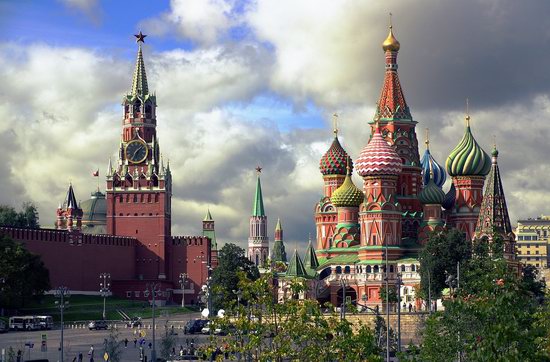28
What you need to know about using your phone in Russia
Russia is an extraordinary place that never fails to completely bewitch those who are fortunate enough to explore it. It is a vast country with endless expanses of nothing at all and cities bursting at the seams with culture and some of the most spectacular architecture in the world.
But it is a bit of an enigma and can be a daunting place to travel to if you aren’t familiar with Russian. English is not widely spoken and written Russian isn’t the easiest to decode. You will definitely want to have your phone with you when you travel to this magnetic, mysterious country.
Getting connected in Russia can be complicated, but it won’t be if you know what your options are and how to get them.
Here are four ways to get connected in Russia and the pros and cons of each:
Roaming on your normal SIM card
Using your regular SIM is the easiest option if you don’t want to worry about figuring out the local providers and different mobile plans. However, not all mobile phone operators support roaming in Russia, so do check with your domestic operator prior to your arrival in Russia.
If your operator does support roaming, then you just need to switch ‘data roaming’ on and your phone will automatically connect to one of the available networks. It’s normally charged on a per MB basis for data usage and a per minute basis for voice calls.
But despite its ease of use, roaming with your SIM comes with a massive downside – it is notoriously expensive. The costs, unfortunately, tend to overshadow the convenience of roaming. Roaming charges can also be quite unpredictable, sometimes doubling outside of the big cities. Some operators also charge for incoming calls but it is possible to get plans that bypass this.
Unreliable connections can also be an issue depending on where you are in Russia. The connections in major cities are generally very good but as soon as you move beyond the city limits to one of the smaller towns or villages that connection becomes unstable and may be lost completely.
Getting an eSIM for Russia
One of the latest solutions for avoiding expensive roaming charges and still remaining connected at all times is eSIM. Embedded SIM is the new kid on the block, but it is quickly gaining appeal amongst travelers and even everyday users. It combines the flexibility of roaming with the affordability and dependability of a local SIM.
eSIM is a small chip embedded inside a range of devices that acts like a virtual SIM card. eSIM plans are downloaded over the internet and activate the chip within the device, helping it connect to mobile services.
The biggest drawcard of using an eSIM for Russia is the price. eSIM operators charge a tiny fraction of what normal SIM card operators charge in order to roam on local networks, so travelers to Russia can use their mobile phone at any time without the fear of a huge monthly phone bill. Another perk is that travel eSIMS are usually open to all the major networks, so you aren’t restricted to one specific provider and ultimately get more coverage and better connectivity.
Phones that have an eSIM also typically have a slot for a regular SIM card, so you can either keep your existing SIM card inside your phone, or buy a local SIM card and use an eSIM for dual-SIM functionality. This is a huge bonus if you’re travelling to Russia for work and need to maintain separate numbers for your personal activity and the other for business.
Another major benefit of using an eSIM in Russia is that you don’t have to buy a new SIM to get connected, you simply buy an eSIM plan online and download it to your phone. The plan is activated by scanning the provided QR code and you’re ready to go. This means you can be connected before you even step off the plane.
Using an eSIM isn’t just great for travelers though, it is also available to locals, with many virtual network operators offering great deals with competitive rates that are exclusive to Russian users.
The only catch with an eSIM for Russia is that you need a phone with eSIM capabilities. Currently, only select phones have eSIM functionality, including the iPhone X, 11 and SE series, and Google Pixel 3 and 4. eSIM plans can be purchased from local operators or online stores like eSIM.net.
Buying a local SIM card
If you don’t want to buy a virtual SIM card, then the local SIM card is cheap and easy to find – they can be bought from one of the many easily recognizable mobile shops at metro stations, shopping malls, and shopping streets. There are also several providers at the airports if you want to get connected as soon as you arrive.
You will just need your passport to buy a SIM card in Russia, and will have to switch it out with your existing SIM.
Popular providers are MTS, Megafon, and Beeline because they have nationwide coverage, but Tele 2, Yota, and Rostelecom are also common. Local SIM cards come with pre-loaded minutes for phone calls and data for internet usage. You can top up through the provider’s website or at a mobile store.
The biggest downside to using a local SIM card is that you are restricted to one provider, which means if they don’t offer good coverage in a certain part of Russia you will notice. SIM cards are known for only really offering good coverage in the major cities.
Using Wi-Fi hotspots
If you don’t want to bother about finding a SIM solution, then you’re lucky that Russia is amazing when it comes to free WiFi. There are hotspots throughout the country, with most restaurants and cafes offering free access, as well as public areas such as airports, railway stations, subway cars, suburban trains, city buses, and parks. To use the wireless network in public spaces you provide your mobile number and get sent an access code by SMS which gets you onto the network.
Using WiFi is easy and cheap and the networks are reliable if you are spending most of your time in the cities – hotspots become less common the further out you go. But only relying on WiFi also comes with its own unique set of faults, particularly censorship and security.
Russia has strict laws about internet content so censorship is a reality. Using public WiFi also makes you more vulnerable to security risks such as hacking and malware. Doing banking or transferring sensitive documents or data isn’t recommended using public hotspots.
Now that you know all about using your mobile phone in Russia, perhaps it’s time to start learning the language?
Tags: No tags
You might also like:
<< Sights of Moscow Oblast – the heart of Russia











Anonymous · August 15, 2023 at 8:45 am
Not anough about malware